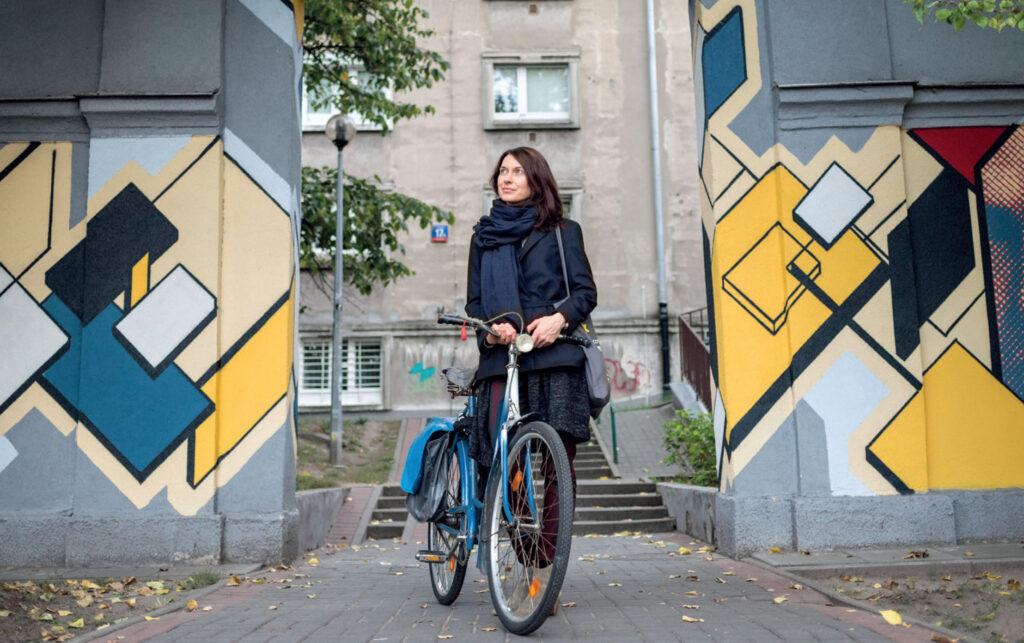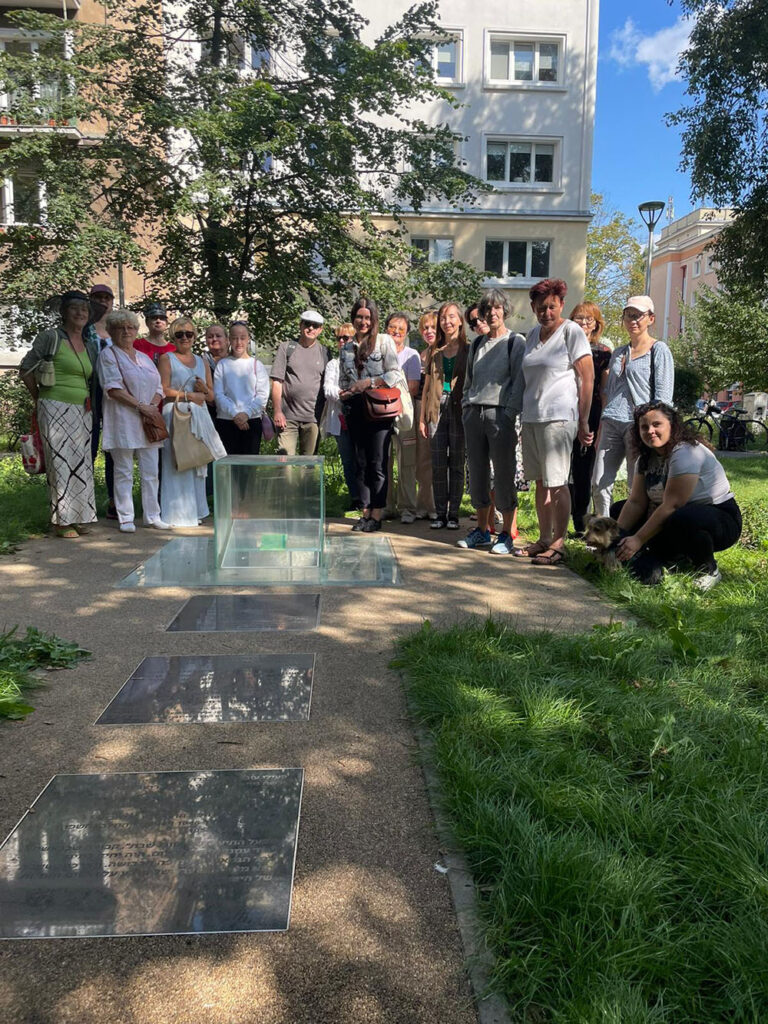Would you like to discover Muranów and Warsaw with me? Let’s go for a walk together!
To give myself a break from reading and writing, I also like to take those with a need to discover on walking tours through Muranów and Warsaw (from March till the end of October). During the last decade, I have guided many individual guests and full groups interested in Warsaw’s architecture and urbanism (like architects, scholars and designers), including the guests of several cultural institutions, like the Polin Museum, Jewish Historical Institute, Centre of Architecture, schools and universities from Poland and abroad, and the clients of private companies. The walks (in Polish and English) are tailored to the client’s particular requirements – standard walks may take two or three hours – but longer trips, exploring hidden places and meeting other experts, can also be arranged. The price varies according to the length of the tour and the language it is conducted in, so if you’re interested, please contact me: stacjamuranow@gmail.com
Sample topics:

fot. archiwum BCH.
Housing development as a monument. An architectural utopia.
Bohdan Lachert, a prominent Polish modernist architect, co-founder of the avant-garde art group Praesens and a member of CIAM (International Congresses of Modern Architects) had a vision of building a new housing estate on top of the ruins of the Warsaw Ghetto that would rise like phoenix from the flames, reminding the world of the tragedy that the Warsaw Jews had gone through. The unique commemorative project had both practical and metaphysical aspects. Unfortunately, historical impact and politics partly thwarted the architect’s original vision.
The walk leads through South Muranów. Its extended version includes the northern part of the district, created by a team of designers led by Stanisław Brukalski and Stanisław Szurmak. This tour will show you how the project was drafted, its later modifications, the fate of the designers involved in its creation, their work in relation to the rebuilding of Warsaw and other reconstructions of post-war Europe (Le Havre, Rotterdam, Berlin).
Duration: 120-160 minutes
Language: Polish, English

„Libération” nr 75/2015, fot. Jan Brykczyński
Muralów
Muranów is the biggest large-format outdoor art gallery in Warsaw. In the last few years many murals have been created in the district’s gateways, courtyards and on its walls. If the current rate continues, Muranów may get ahead of Zaspa in Gdańsk — a neighbourhood with the biggest concentration of murals in Poland at the moment. Unlike Zaspa, due to its complicated and difficult history, Muranów has murals that hold both aesthetic and educational qualities. Since 2010, street artists have created a new historical narrative with local murals dedicated inter alia to architect Bohdan Lachert,as well as Ludwik Zamenhof, Janusz Korczak and Marek Edelman.
The walk follows a route of Muranów’s most famous murals, explaining their themes, revealing the stories behind their origins and the artists’ profiles. During the walk, we’ll look closely at each individual work and compare it to other large-format painting in Poland throughout history. We will also find out why Marek Edelman’s mural changed its original location, which mural got to have its own anthem, and what do Master Yoda and Clint Eastwood have in common with the Esperanto language. We’ll also reflect on why murals have become such a phenomenon in the last decade, and look at the causes of their popularity, controversy and the dilemmas they still evoke.
Duration: 120 minutes
Language: Polish, English

„Stolica” nr 21/1951 r.
Heroes on the scaffolding
“The masses will enter the city centre” said the sign above the gate leading into Muranów, in front of which new residents received keys to their new apartments granted by the authorities. Not only was Muranów supposed to be a settlement-monument to commemorate the Warsaw Ghetto, as its architect wanted, but also the first and the biggest housing estate for the working class in Warsaw’s city centre. Its architectural aim was to contrast the pre-war densely populated streets of the Northern District.
During the walk, we will tell you about the rivalry of work and competition between Muranów and another massive social-realist construction site of the time in Poland, i.e. Nowa Huta in Krakow. We’ll find out who was breaking records in productivity and who won the “rationalization races”. We will learn about the heroes from propaganda literature, namely construction workers and engineers, we will analyse the mythology behind the “hero-worker” and socialist women workers, take a close look at the first residents, and go back to the pioneer times of Muranów captured in literature and film.
Duration: 120 minutes
Language: Polish, English

fot. archiwum BCH.
The Northern District. A world that no longer exists.
The former Northern District, now referred to as Muranów, was home to Warsaw’s Jews. Today, it exists only in literature, in old photographs, and in the memories of its former residents. After the war, the streets and squares have changed their names and courses. Some of them disappeared altogether, later replaced by modern apartment blocks. We will, however, carefully look around and get off the beaten track led by our experienced guide in order to find out that not everything had perished. Traces of old Muranów can still be found on buildings, sidewalks and in basements.
During the walk we will travel 80 years back in time and learn about the former Northern District’s everyday life through people, documents and literature. We’ll find out where the “good” and “bad” streets were, recall the most important places, buildings, people associated with pre-war Muranów, and try to look beneath the layer of modern architecture to experience the non-existent images and sounds.
Duration: 120 minutes
Language: Polish, English

fot. archiwum BCH.
Urban archeology
At first sight, the Polish capital city seems like a strange puzzle that speaks a completely unknown language. We strive to decode it together step by step, layer by layer, discovering the elements of its urban archaeology. In Warsaw, the term ‘archaeology’ has a slightly different meaning than in Istanbul or Rome – but no less fascinating. The current architectural and urban shape of the city has been determined by several events in its past, especially the Second World War and the communist period. During this walk, we witness the most important destinations on the contemporary map of Warsaw together with their historical context, visiting the Jazdów estate, the Palace of Culture and Science, Warsaw Central Railway Station, the Grzybowski Square and other surprising places.

